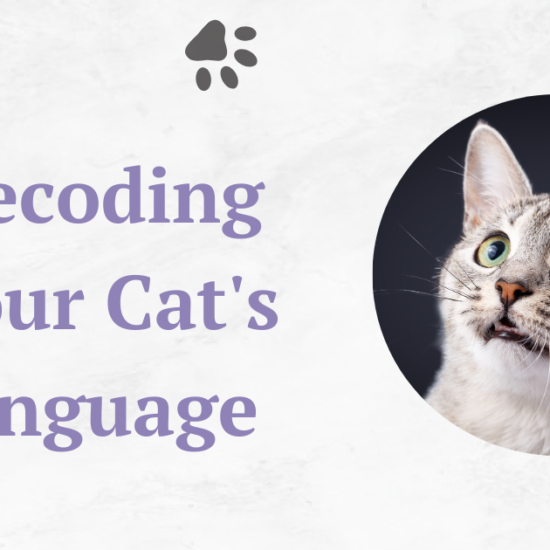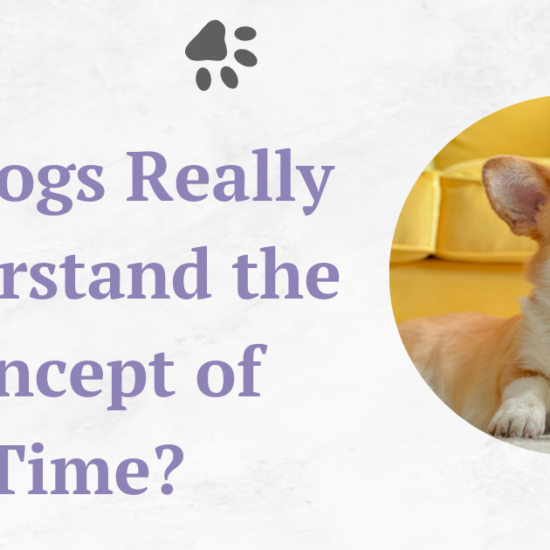For thousands of years, dogs have enjoyed an extraordinary link with humans, growing from their wolf ancestors into loyal, caring, and intellectual creatures. Certain dog breeds have captivated our adoration throughout history for their outstanding cognitive ability and problem-solving skills.
Table of Contents
Introduction
In this in-depth study, we delve deep into the realm of the most intelligent dogs in the world, delving deep into their cognitive powers, trainability, and distinctive characteristics. We develop a better understanding and regard for our canine companions by appreciating their intellectual powers.
Exploring the World’s Smartest Dog Breeds
Let’s delve into the world of the most intelligent dogs in the world.
Defining Intelligence in Dogs

The task of defining intelligence in dogs is hard and multifaceted. It includes a broad variety of cognitive qualities such as problem-solving abilities, memory, adaptability, and social intelligence. The most intelligent dogs in the world demonstrate intelligence in a variety of ways, including learning new commands, comprehending clues, solving puzzles, and displaying emotional sensitivity toward their human friends.
Problem-solving abilities are an essential component of the world’s smartest dogs. Some dogs have an extraordinary capacity to appraise a situation and devise creative solutions to problems they face. Certain breeds, such as Border Collies, are noted for their remarkable problem-solving abilities, which have led to their success as herding dogs. They can evaluate cattle motions, predict their behavior, and make swift judgments to successfully control their movement.
Memory is another important aspect of the most intelligent dogs in the world. Dogs can remember and recall information such as the location of hidden objects or the order of commands during a training session. This memory ability enables them to learn and retain information over time, contributing to their total cognitive capacities.
The world’s smartest dogs rely heavily on adaptability. Dogs with great adaptability can cope with new environments, routine adjustments, and unexpected situations. They are flexible companions for diverse lifestyles and surroundings since they can quickly learn and grasp new norms and expectations.
Another significant aspect of the most intelligent dogs in the world is social intelligence. Dogs are born with the ability to recognize and respond to human emotions, demonstrating empathy and building strong social ties with their human companions. This social intelligence enables canines to provide comfort and support as therapy dogs or to excel in positions requiring a human connection, such as guide dogs for the visually impaired.
It is important to note that intelligence in dogs varies widely between individuals. Genetics, early socialization, training, and a dog’s distinctive personality and experiences all play a role in creating a dog’s cognitive ability. Each dog is an individual, and their intelligence should be rated with these aspects in mind rather than relying exclusively on breed-based assumptions.
Methodology and Criteria for Ranking Intelligence

Many dog enthusiasts and scholars are interested in ranking dog breeds based on intelligence. However, such rankings should be approached with caution because intelligence is a complex quality that cannot be readily quantified or assessed. While various approaches and criteria for assessing dog intelligence have been developed, they have limits and should be evaluated with caution.
One popular way of assessing intellect is based on obedience and working intelligence. This method emphasizes a dog’s capacity to learn and follow orders, as well as their aptitude for work-related or particular job responsibilities. This involves training in obedience, herding, search and rescue, and assistance work. Due to their great trainability and eagerness to work alongside humans, breeds such as German Shepherds and Golden Retrievers frequently thrive in these areas.
It is crucial to note, however, that obedience and working intelligence do not represent the complete spectrum of cognitive capacities in the world’s smartest dogs. Intelligence is a multidimensional quality that comprises, among other things, problem-solving abilities, memory, adaptability, and social intelligence. If you only focus on obedience or working intelligence, you may ignore breeds or individual dogs who have other cognitive qualities, such as creativity, independent thinking, or specific capabilities outside of obedience tasks.
Another intelligence rating criterion is the number of repetitions required for a dog to learn a new command or activity. In this context, the most intelligent dogs in the world require fewer repetitions. While this criterion can provide some insight into a dog’s learning pace, it is crucial to remember that each dog has different learning preferences and strengths. Some canines excel at specific things while others require more repetitions. As a result, rather than depending simply on this criterion, it is critical to assess a dog’s entire cognitive abilities.
Furthermore, intelligence should be viewed as a dynamic quality that may be changed by a dog’s temperament, motivation, readiness to please, and training tactics used. Some extremely clever dogs may be stubborn or independent, affecting their trainability. Breeds with lower intellect ratings, on the other hand, may succeed in obedience and working activities due to their cooperative attitude and enthusiasm to learn.
In conclusion, while evaluating the most intelligent dogs in the world based on obedience and working intelligence can provide some information, it is critical to recognize the limitations of such criteria. Dog intelligence is diverse and includes a wide variety of cognitive abilities. Individual aspects like genetics, early socialization, training, and unique personalities and experiences must all be considered when assessing canine intelligence.
Top Smartest Dogs In The World
While the top smartest dogs in the world are frequently recognized for their intelligence, it is crucial to understand that IQ within a breed can vary substantially. Individual dogs within these breeds may have varying levels of cognitive skills due to factors such as heredity, early socialization, training, and their individual personalities and experiences.
Some dog breeds have long been considered among the world’s smartest dogs due to their problem-solving abilities, trainability, and overall cognitive aptitude. These breeds frequently exhibit a high level of intelligence and succeed at a variety of tasks. It is important to remember, however, that intelligence rankings should not be used to select a dog breed. Other considerations to consider are compatibility with your lifestyle and the dog’s specific temperament.
The breeds widely considered to be very clever are:

- Border Collie
Border Collies are frequently regarded as one of the world’s smartest dogs. They are extremely trainable, excel in a variety of activities such as herding, agility, and obedience, and are well-known for their problem-solving ability.

2. Poodle
Poodles are well-known for their intellect as well as their attractive appearance. They are extremely trainable and flexible, excelling in tasks such as obedience, retrieving, and even acting as service dogs.
3. Doberman Pinscher
Doberman Pinschers are extremely trainable and one of the top smartest dogs in the world. They have a tremendous desire to please their owners and are capable of performing jobs such as guarding, search and rescue, and obedience competitions.
4. Australian Shepherd
Australian Shepherds are well-known for their intellect and high levels of energy. They thrive at a variety of dog sports and activities such as herding, agility, obedience, and even competitive frisbee.
5. Golden Retriever
Not only are Golden Retrievers kind and loyal, but they are also quite intelligent. They are easily trained and frequently excel in duties including obedience, search, rescue, therapy work, and support tasks.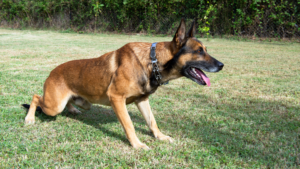
6. Belgian Malinois
Belgian Malinois are bright, driven dogs that are frequently utilized in working jobs such as police and military duties. They are noted for their problem-solving ability and strong work ethic.
7. Shetland Sheepdogs
Shetland Sheepdogs, sometimes known as Shelties, is one of the top smartest dogs in the world. They excel in obedience and agility, and some individuals retain their herding instincts.
8. German Shorthaired Pointers
German Shorthaired Pointers are bright and versatile hunting dogs. They have a good sense of smell and excel at fieldwork, tracking, and hunting.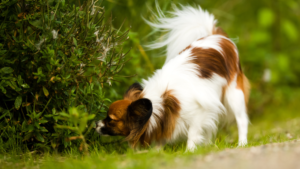
9. Papillon
Papillons are little in stature but large in intelligence. They are extremely trainable and agile and frequently succeed in obedience, agility, and even canine freestyle.

10. Rottweiler
Rottweilers are intelligent, self-assured canines. They are noted for their devotion and protective attitude and may be trained for a variety of duties including obedience, tracking, and protection work.
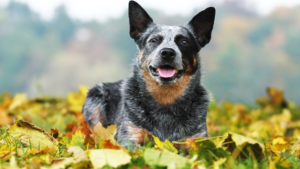
11. Australian Cattle Dogs
Australian Cattle Dogs, often known as Blue Heelers or Queensland Heelers, are very clever and adept at herding chores. Their problem-solving talents, agility, and loyalty are well-known.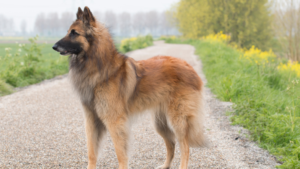
12. Belgian Tervurens
Belgian Tervurens are one of the world’s smartest dogs and most adaptable working dogs. They are easily trained, have a strong work ethic, and excel at a variety of jobs such as herding, obedience, tracking, and search and rescue.

13. Bloodhounds
Bloodhounds are well-known for their remarkable scent-tracking abilities. They have an exceptional sense of smell and are frequently utilized in search and rescue missions as well as following dogs. Their intelligence and perseverance enable them to flourish in their specific employment making them one of the top smartest dogs in the world. 
14. Weimaraner
Weimaraner dogs are intelligent and lively. They are extremely trainable and excel in a variety of activities including obedience, tracking, and agility. Because of their intelligence and hunting instincts, they are flexible and effective working dogs.
15. Border Terrier
Border Terriers are small in stature but extremely intelligent. They are noted for their problem-solving abilities as well as their capacity to learn and adapt swiftly. It is crucial to note that these are not the only smartest dogs in the world; there are countless additional breeds and mixed breeds that have high intellect levels. A dog’s intellect should not be based primarily on its breed, but should also take into account individual differences and special qualities.
Intelligence and Trainability

While intellect can influence a dog’s trainability, it is not the only aspect to consider. Trainability is determined by a variety of factors, including the temperament of the dog, motivation, readiness to please, and the training tactics used. Some of the world’s smartest dogs can be stubborn or independent, which might impair their trainability, but other breeds with lower intelligence ratings may thrive in obedience and working activities due to their cooperative nature and enthusiasm to learn.
Intelligence may undoubtedly make the training process more efficient and easy. Dogs with higher intelligence learn and remember commands and concepts more rapidly, with fewer repeats. Their ability to solve problems and think for themselves enables kids to generalize learned habits and apply them in new settings.
However, intellect alone does not guarantee that a dog will be well-trained. The temperament of the dog is important in terms of trainability. The top smartest dogs in the world with consistent and adaptable temperaments are more responsive to training and eager to please their owners. A dog’s motivation and drive to learn also have an impact on its trainability. Some dogs are strongly motivated by food and react well to reward-based training approaches, whilst others may be driven by play or praise.
The training methods used by the owner or trainer also have an impact on a dog’s trainability. Positive reinforcement strategies like prizes, praise, and clicker training work well with most dogs, especially those with high intellect. These techniques foster a good link with training and encourage dogs to actively participate in the learning process.
It is crucial to notice that no two dogs, even those of the same breed, are exactly the same. Each dog has its own personality, life experiences, and learning preferences. Some extremely clever dogs may have a strong independent streak, making them more difficult to train. These canines may challenge commands or seek alternative solutions to situations. These difficulties can be solved with patience and regular training, as well as an awareness of the dog’s specific character and motives.
Dogs with lower intellect ratings, on the other hand, might excel in obedience and working activities due to their cooperative nature and inclination to please. These dogs may be more reliant on their owners’ or trainers’ clear and constant guidance. Although learning new commands may take more repetition and practice, their drive to learn and desire to work with their human companions might compensate for their perceived lesser IQ.
To summarize, while intelligence can influence a dog’s trainability, it is not the only aspect. The temperament, motivation, and training strategies used by some of the top smartest dogs in the world all play important roles. Understanding and adjusting to the demands of the particular dog, regardless of intelligence level, is critical for successful training. Patience, consistency, and positive reinforcement are essential components of effective training, helping dogs to attain their full potential and establish appropriate manners and behaviors.
The Role of Genetics in Canine Intelligence

Genetics influences a dog’s intelligence capacity. Certain features of the top smartest dogs in the world related to cognitive skills can be influenced by breeding methods. It is crucial to remember, however, that intelligence is not primarily determined by genetics. Environmental influences, socialization, early experiences, as well as the level of training and mental stimulation provided, all contribute to a dog’s general intelligence and cognitive development.
Selective breeding can be used to emphasize specific attributes within the most intelligent dogs in the world, such as smartness. Breeders may prefer to breed dogs with superior problem-solving abilities, trainability, and other cognitive traits. Certain breeds have evolved to have a higher potential for intellect via generations of selective breeding.
It is important to remember, however, that individual variation exists within every breed. Not all dogs of the same breed will be as intelligent or excel at the same cognitive activities. Although genetic intelligence potential offers a basis, it does not ensure the development of strong cognitive talents in every particular canine.
While genetics can offer a foundation, environmental variables have a considerable impact on a dog’s intellect. For cognitive development, early socialization and exposure to a variety of stimuli and experiences are critical. Positive interactions with humans, other animals, and varied locations aid in the development of confidence, problem-solving skills, and the ability to adjust to new conditions.
A dog’s IQ is also influenced by the quality of training and mental stimulation supplied to them. Dogs who receive continuous and regular training, as well as mental enrichment activities, have the opportunity to grow and perfect their cognitive abilities. Participating in interactive games, puzzle toys, and obedience training exercises tests their problem-solving abilities and keeps their wits fresh.
Furthermore, the bond and interaction that the most intelligent dogs in the world have with its owner aid in their cognitive growth. Dogs with deep bonds to their owners and who receive positive reinforcement and instruction are more likely to be motivated and interested in learning. A trusting and supportive partnership creates an atmosphere in which dogs can explore their intelligence and test their limits.
It is critical to understand that intelligence in the most intelligent dogs in the world is a multidimensional quality. Canine intelligence includes a wide range of cognitive talents, such as problem-solving abilities, memory, adaptability, and social intelligence. Some canines may thrive in one area of intellect while falling short in another. A dog, for example, may be very competent at learning and executing obedience commands but may not be as skilled in problem-solving in unfamiliar situations.
To summarize, genetics have a role in a dog’s IQ capacity, but it is not the primary factor. A dog’s entire cognitive development is influenced by environmental influences, socialization, early experiences, training, and mental stimulation. Each dog is an individual with a distinct genetic composition and life experiences that develop their intellect. Owners can assist their pets realize their full cognitive potential by providing a supportive and enriching environment.
Beyond IQ : Emotional Intelligence in Dogs

While intelligence tests frequently emphasize problem-solving and learning abilities, emotional intelligence is an important component of a dog’s overall intellect. Emotional intelligence refers to a dog’s ability to recognize and respond to human emotions, as well as to show empathy and create social ties. Individual dogs’ emotional intelligence can vary, regardless of breed or IQ level.
The most intelligent dogs in the world have a remarkable aptitude for emotional connection and comprehension. They are sensitive to human emotions and can detect small changes in facial expressions, body language, and voice tone. This sensitivity enables them to provide comfort and support to their human friends in times of hardship.
Emotional intelligence is not restricted to human relationships. Dogs show emotional intelligence when they engage with other dogs and animals. They can assess and respond to their fellow dogs’ emotional states, recognizing signs of fear, playfulness, or hostility. This ability to understand and interpret social cues contributes to their ability to successfully navigate social encounters.
A combination of hereditary and environmental variables influences the development of emotional intelligence in the most intelligent dogs in the world. Certain breeds may be more emotionally attentive and responsive than others, but individual experiences, socialization, and the quality of human connection all play a role. Dogs who are raised with positive reinforcement, careful handling, and consistent socialization are more likely to acquire high emotional intelligence.
The ability of the world’s smartest dogs to create profound emotional relationships with their human caretakers is one amazing facet of their emotional intelligence. They are loyal and loving, and have a tremendous desire to please their owners. This tie extends beyond basic obedience to include a deep emotional connection. Dogs are capable of sensing and responding to their owners’ emotional states, bringing comfort and companionship in times of melancholy, worry, or anxiety.
Emotional intelligence in the top smartest dogs in the world has benefits that go beyond human-animal interaction. Emotionally intelligent dogs are frequently more flexible and resilient in a variety of conditions. They can better explore new situations, encounter new people and animals, and deal with changes in routine. This versatility is especially useful in therapy dogs, which provide emotional support to people in hospitals, nursing homes, and other care facilities.
Additionally, emotional intelligence can help a dog’s general well-being. World’s smartest dogs are more likely to have excellent mental health results. They may experience less worry and tension because they can better understand and manage their emotions. Emotional intelligence enables canines to cope with difficult situations and recover more quickly from unpleasant experiences.
To summarize, while intelligence tests frequently emphasize problem-solving abilities, emotional intelligence is an important component of a dog’s overall intellect. Dogs are born with the ability to perceive and respond to human emotions, to show empathy, and to create strong emotional attachments. Genetics, early experiences, socialization, and the quality of human connection all influence dogs’ emotional intelligence. Fostering emotional intelligence in dogs benefits not only the human-animal bond but also their overall well-being and adaptability.
Note: There might be affiliate links mentioned here. We may receive a commission if you purchase a product through an affiliate link. There is no additional charge for you. Please do your own research before making any online purchases.
Practical Applications of Canine Intelligence

While the world’s smartest dogs are frequently linked with specific practical responsibilities, such as search and rescue, therapy work, or police and military activities, it is crucial to remember that a dog’s appropriateness for these tasks is influenced by individual temperament, training, and experience. The intelligence of a dog does not ensure success in practical applications; other criteria such as physical ability, motivation, and specific training programs are critical in assessing fit and efficacy.
- Search and Rescue: Scent-detecting dogs with problem-solving abilities are frequently used in search and rescue operations. In this profession, breeds like as the German Shepherd, Border Collie, and Labrador Retriever are noted for their intelligence and trainability. With the assistance of their handlers, these dogs can locate missing people, detect survivors in disaster regions, and cross difficult terrain. Their intelligence enables them to assess complex scent patterns and make decisions that help search and rescue efforts succeed.
- Therapy Work: Therapy dogs are dogs with high levels of emotional intelligence and a kind attitude. Individuals in hospitals, nursing homes, schools, and rehabilitation centers benefit from these canines’ comfort, emotional support, and companionship. Due to their pleasant and peaceful disposition, breeds such as the Golden Retriever and the Newfoundland are popular selections. Therapy dogs’ intelligence allows them to adapt to varied surroundings, respond correctly to human emotions, and provide a calming presence to people in need.
- Police and Military Duties: Certain breeds, such as the Belgian Malinois, Dutch Shepherd, and German Shepherd, are frequently chosen for police and military work. These world’s smartest dogs have a unique combination of intelligence, physical endurance, and bravery, which makes them ideal for jobs such as tracing suspects, apprehending criminals, detecting explosives or narcotics, and serving as important companions to law enforcement officials. Their intelligence enables them to learn and execute complex commands fast, assess conditions, and make split-second decisions in high-pressure situations.
- Assistance Work: Dogs trained to aid people with disabilities, such as guide dogs for the blind or service dogs for those with mobility issues, rely on their intelligence and problem-solving ability to travel and perform specialized duties. Labrador Retrievers and Golden Retrievers are one of the world’s smartest dogs due to their intelligence, trainability, and gentle disposition. These canines have been trained to respond to spoken directions, navigate obstacles, retrieve objects, and assist with daily routines. Their intelligence allows them to adapt to their handlers’ specific requirements and tastes, making them invaluable companions.
- Obedience and Agility Trials: Obedience and agility trials allow dogs to demonstrate their intelligence, trainability, and athleticism. The top smartest dogs in the world compete in obedience exercises or agility courses, proving their ability to follow orders, solve difficulties, and accomplish tasks with precision and speed. Due to their high levels of intelligence, agility, and enthusiasm to please their handlers, breeds such as the Border Collie, Australian Shepherd, and Poodle are frequently successful in these competitions. Their intelligence enables them to quickly comprehend and execute complex command sequences, making them top contenders in these competitions.
While intelligence is vital in these professions, it must be supplemented by other characteristics such as temperament, physical talents, motivation, and specialized training programs. Dogs with the correct combination of intelligence, temperament, and physical characteristics can make essential contributions in various practical applications, demonstrating their extraordinary abilities and traits.
Nurturing Your Dog’s Intelligence

While most intelligent dog breeds in the world are naturally clever creatures, it is critical to nurture and develop their cognitive abilities in order to maximize their potential as companions. Mental stimulation, training, and socializing are all important aspects of improving a dog’s intellect.
Mental Stimulation: Keeping your dog’s intellect sharp and interested requires regular mental stimulation. Puzzle toys, interactive games, and obedience training are examples of activities that will test their problem-solving ability.
Training: Training sessions not only teach your dog fundamental commands and excellent conduct, but they also give cerebral activity to your dog. To keep your dog motivated and involved, use positive reinforcement tactics that reward desired behaviors. Increase the difficulty of training tasks gradually to keep their minds stimulated.
Socialization: From a young age, exposing your dog to a range of people, animals, and situations increases social intelligence and adaptability. Positive contacts with other dogs and humans help them develop social skills, teach acceptable behavior, and improve their capacity to recognize and respond to various social cues.
Playtime: For dogs, play is not only a joyful and enjoyable activity, but it also provides an opportunity for mental stimulation. Engage in problem-solving interactive play sessions, such as hiding goodies or toys for your dog to uncover.
Enhanced Environment: Providing your dog with an enhanced environment at home is good for his cognitive development. To keep them mentally busy, provide a variety of toys, especially interactive and challenging ones. To keep their attention, rotate the toys on a regular basis.
Balance Physical and Cerebral Activity: While cerebral stimulation is crucial for the most intelligent dog breeds in the world, appropriate physical activity is also essential. Dogs require regular physical activity to preserve good health and well-being.
Bonding and Good Reinforcement: Fostering your dog’s intelligence requires establishing a strong attachment based on trust and good reinforcement. To reinforce desired behaviors and establish a good learning environment, use prizes, praise, and affection.
Quality Time: Quality time spent with your dog is critical for their cognitive and emotional well-being. Engage in things that both of you like, such as hiking, workouts, or simply cuddling on the couch. Human engagement and friendship are important to dogs, and your presence and attention contribute to their overall pleasure and cerebral stimulation.
You may foster your dog’s intelligence and cognitive abilities by applying these tactics, improving their overall well-being and strengthening your bond with your furry buddy. Remember to be patient, flexible, and sensitive to your dog’s specific requirements, as they are individuals with their own learning preferences and strengths. Nurturing their intelligence benefits them while also deepening their beneficial relationship.
Challenges in Measuring Canine Intelligence

Given the vast range of cognitive abilities and the influence of individual factors on performance, measuring canine intelligence is a difficult undertaking. Environmental conditions, motivation levels, and the precise context of the exam can all have a substantial impact on a dog’s performance, and intelligence tests may not fully reflect the breadth of a dog’s cognitive ability. As a result, intelligence should be viewed as a dynamic and multidimensional quality that cannot be adequately captured by a single test or statistic.
- Cognitive talents: Most intelligent dog breeds in the world have a wide range of cognitive talents, and intelligence includes a variety of elements like problem-solving, memory, adaptability, and social intelligence. Individual dogs and breeds may excel in different areas, making it difficult to develop a standardized assessment that reliably assesses total intelligence.
- Environmental Influence: A dog’s surroundings have a tremendous impact on its cognitive development. Socialization, early experiences, and the level of training and mental stimulation provided can all have an impact on their cognitive ability.
- Motivation and Context: A dog’s motivation to perform a specific test or task might have an impact on its performance. If a dog is uninterested or unmotivated in the context of an intelligence test, the results may not correctly reflect its genuine cognitive ability.
- Breed Differences: Breed-specific traits and characteristics can influence intelligence test results. While particular breeds are frequently linked with high intellect, it is crucial to note that IQ can vary greatly within a breed. Genetics, early socialization, and training all have an impact on individual diversity within a breed.
- Assessment Methods Lack Consensus: There is no commonly approved assessment method for testing canine intellect. Various tests and measures, including problem-solving exercises, memory tests, and obedience tests, have been devised.
- Communication Barrier: Dogs communicate and see the world differently than humans, which can make measuring their intellect difficult. Traditional intelligence tests frequently focus on verbal or visual signals, which may not be the best way to assess a dog’s cognitive abilities.
- Individual Differences: Just as humans have individual differences in intellect, dogs have significant variations in their cognitive ability. Individual differences in intelligence can be attributed to a variety of factors, including genetics, early experiences, training, and personality traits. Accurately assessing and quantifying these individual variances might be difficult.
Given these difficulties, it is critical to approach canine intelligence testing with caution and to appreciate its limitations. While intelligence tests can provide some information, they should be viewed as one piece of a wider puzzle when it comes to evaluating a dog’s cognitive ability.
Rather than focusing exclusively on intellect, it is more important to recognize and encourage individual dogs’ cognitive capacities. Mental stimulation, training, and socialization customized to each dog’s needs can improve their cognitive growth and overall well-being. Recognizing the diversity of cognitive capacities in dogs can help us gain a better grasp of their intelligence while also contributing to stronger bonds and more rewarding interactions with our furry friends.
Common Myths About Dog Intelligence
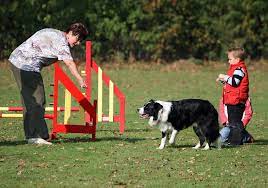
Despite our awareness of canine intelligence, some myths lead to misconceptions and misunderstandings.
- Intelligence is Determined by Breed: A frequent misconception is that certain breeds are intrinsically more intelligent than others. While particular breeds are known for their intelligence, it is crucial to remember that intellect is determined by factors other than breed. Individual variance within a breed is substantial, and exceptionally intelligent dogs can exist in breeds that are not traditionally thought to be particularly clever.
- Obedience Equals intellect: Another common misconception is that a dog’s intellect can be determined purely by his or her obedience. Obedience is only one facet of intelligence and does not encompass all of a dog’s cognitive abilities. Training methods, desire, and temperament, rather than overall intelligence, may influence a dog’s capacity to follow directions. A dog may excel at problem-solving tasks or have outstanding social intelligence yet exhibit less obedience in certain situations.
- Size Doesn’t Determine IQ: A dog’s IQ is not determined by its size. Small and giant breeds can both demonstrate high levels of intelligence and succeed at various cognitive activities.
- Purebred Dogs Are Smarter: Purebred dogs are not the only ones who are intelligent. Mixed-breed dogs can be quite intelligent and have a wide variety of cognitive abilities.
We can establish a more accurate and balanced knowledge of dog intelligence by eliminating these fallacies. Recognizing that intelligence is not primarily defined by breed, size, or obedience allows us to recognize individual dogs’ cognitive skills and modify our expectations and training tactics accordingly.
Why Choose Smart Dogs?

While intelligence should not be the only element considered when choosing a dog, it can improve the overall ownership experience and contribute to a harmonious and fulfilling relationship. Here are some reasons why getting a clever dog may be advantageous:
Trainability: Because of their ability to grasp and remember commands rapidly, smart dogs are frequently extremely trainable.
Problem-Solving Skills: Intelligent canines are superb problem solvers. They can appraise conditions, think critically, and solve problems.
Adaptability: Smart canines are frequently more adaptive to new situations and environments. Their cognitive flexibility enables individuals to more readily adjust to changes, learn new routines, and cope with novel stimuli. Because of their versatility, they can be adaptable companions who flourish in a variety of lifestyles and surroundings.
Mental Stimulation: The most intelligent dog breeds in the world require more mental stimulation. They thrive when given fascinating activities that stretch their intellect. Puzzle toys, interactive activities, and training sessions that boost their problem-solving talents and keep them mentally engaged can be included.
Bonding and Interaction: Intelligent dogs are generally more in tune with their owners and exhibit a higher level of social intelligence. They are capable of comprehending human emotions, responding to stimuli, and forming strong ties with their owners. This improved communication and connection might lead to a more fulfilling relationship between the dog and his or her owner.
Versatility: Intelligent canines succeed in a variety of activities and responsibilities. Their cognitive talents qualify them for duties such as therapy, service dog employment, competitive sports, and specialized training.
Owners’ Mental Stimulation: Having a smart dog can be intellectually stimulating for the owner as well. Training and interacting with a dog with superior cognitive ability can be a joyful and intellectually satisfying experience.
In conclusion, while intelligence is not the only element to consider when selecting a dog, choosing a clever canine breed or individual can provide various benefits.
The Responsibility of Owning a Smart Dog

Owning one of the most intelligent dogs in the world entails a lot of responsibility. While its intelligence can provide several benefits, it also imposes certain responsibilities on owners in order to protect their well-being and build a happy and enriching environment.
- Mental Stimulation: Intelligent dogs require more mental stimulation than other breeds. It is critical that they have regular opportunities for mental exercise and enrichment. This can include interactive toys, puzzle games, training sessions, and activities that put their problem-solving skills to the test.
- Socialization and Training: Intelligent canines thrive with adequate training and socialization. Although their cognitive powers allow them to learn fast, they also require regular direction and encouragement to develop excellent actions and manners.
- Physical Exercise: In addition to mental stimulation, clever dogs require frequent physical exercise to stay physically fit and healthy. Providing an outlet for their energy will aid in the prevention of boredom and harmful behaviors that may occur when their bodily demands are not addressed.
- Problem-Solving Activities: Smart dogs like activities that test their problem-solving ability. To keep their minds bright and interested, incorporate interactive games and problem-solving exercises into their daily routine.
- Consistency and Clear Expectations: Intelligent dogs thrive in environments that have clear rules and consistent expectations. Establish consistent routines and use positive reinforcement strategies like prizes, praise, and treats to promote desired behaviors
- Social Engagement: Intelligent canines are frequently good at building social relationships and love social engagement. .
- Avoiding Boredom and Destructive Behaviors: Intelligent dogs can easily become bored if their mental and physical requirements are not addressed. Boredom can cause harmful activities like chewing, barking excessively, or digging. To keep your dog mentally busy and interested, provide a variety of toys, rotate them regularly to keep them interesting, and give interaction activities.
- Constant Learning and Progress: Having a smart dog allows for continual learning and progress for both you and your dog. Keep up to date on innovative training techniques, enrichment activities, and canine research to ensure you’re giving your clever companion the greatest care and mental stimulation possible.
Keep in mind that owning a smart dog is a long-term commitment. Their intellect necessitates that their owners maintain a stimulating and supportive environment for the rest of their lives.
FAQs
What is the definition of intelligence in dogs?
Problem-solving abilities, memory, adaptability, and social intelligence are all examples of intelligence in dogs.
What factors are used while ranking the IQ of dog breeds?
Ranking criteria include obedience and working intelligence, learning speed, and cognitive ability.
What are some of the world’s brightest dog breeds?
Among the sharpest breeds include the Border Collie, Poodle, Doberman Pinscher, Australian Shepherd, and Golden Retriever.
Is intelligence a guarantee of dog trainability?
Trainability can be influenced by intelligence, but temperament, motivation, and training methods also play a role.
What effect does genetics have on canine intelligence?
Although genetics contribute to intelligence, environmental variables, training, and mental stimulation all play a role in a dog’s cognitive development.
What can I do to improve my dog’s intelligence?
Mental stimulation, training, socialization, playtime, a better environment, and a balance of physical and brain exercise are all important.
How can I assess the intellect of my dog?
Individual characteristics, contextual influence, motivation, breed variances, and a lack of consensus on evaluation methodologies make measuring canine intelligence difficult.
What are some prevalent misconceptions about dog intelligence?
Myths about intelligence include breed-based intelligence, obedience as the sole measure of intellect, size dictating IQ, purebred dogs being smarter, and intelligence equaling trainability.
Why should you get a smart dog?
Smart dogs are highly trainable, have problem-solving abilities, adapt well, demand mental stimulation, improve bonding, are versatile, and give mental stimulation to their owners.
What are the duties of owning a smart dog?
Mental stimulation, sociability, training, physical activity, problem-solving activities, consistency, clear expectations, and social involvement are all responsibilities for their well-being.
Conclusion
Understanding and appreciating dog intelligence requires more than just evaluating breeds and stereotypes. It involves acknowledging each dog’s distinct personality and cognitive ability. While intelligence can provide several benefits, it also necessitates responsible ownership and the fulfillment of specific tasks to meet the demands of smart canines.
Consider aspects other than IQ when selecting a dog, such as temperament, energy level, and compatibility with your lifestyle. If you decide to adopt a clever dog, be prepared to give cerebral stimulation, training, socializing, and continual learning opportunities. The bond and connection you form with your intelligent dog can be extremely rewarding, and their cognitive talents can improve your relationship and build a harmonious partnership.
Remember that owning a dog is a lifetime commitment that needs time, effort, and love. Understanding and embracing your canine companion’s intelligence allows you to provide them with a satisfying and meaningful existence, forming a lifelong link that brings joy and affection to both of you.






